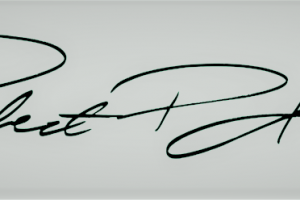Because in our line of work, time is money, I keep close track of my billable hours. I write my time entries down after each billable event. When I hear about lawyers not writing down time for a couple of days and having to go back and recreate it, I shudder. People are generally lousy judges of how long things have taken to accomplish tasks. When lawyers go back and recreate time, they are sure to overbill clients for some tasks while underbilling clients for different tasks. Not to mention the things they’ve done and forgotten about in the last 24-48 hours. Regardless of how it turns out, someone is getting cheated out of time or money.
While redundant, my system has the benefit of having one hard copy of my billable time in case something tragic happens to our computer systems (I have every notepad that I’ve filled out dating back to 2012, and they’re moldering in some desk drawer — I feel oddly sentimental about them), as well as two digital copies of those same time entries – one in Excel and another in the billing software.
There are many effective methods of keeping track of time, and I’m not advocating that mine is the best. There are new programs that will sync Siri or Alexa to billing software and allow you to dictate your time entries directly into the software. One of my partners keeps his billing software open all day on a second monitor and types up his time entries as he goes along. My point is that regardless of what method you use to record your billable time, you need to have a system you abide by that doesn’t allow you to lose unrecorded time or force you to recreate it sometime later.
For example, if I haven’t issued discovery requests yet, I’ll have a red marker over that cell. Once the discovery requests have been filed but before I received the responses, the cell will be yellow or orange (once the responses are overdue). When the written discovery is completed, those cells will be green. But there are plenty of tasks that arise that fall outside the scope of my case management spreadsheet. For these things, I have a to-do list. And I love to-do lists, mostly because I really enjoy crossing things off to-do lists. In fact, I’ve been known to put an item on a to-do list so that moments later when I complete the task, I can have the joy of crossing it off the list.
I write my to-do lists on a white 5×8 steno notepad that is the sibling of the yellow notepad for time entries. Again, this is the same method I’ve used since I started practicing. As with recording billable hours, there are many methods for making to-do lists. You can use Evernote, an app on your phone, or practice management software. As technology progresses, your options for systematically managing your to-do list will also increase.
However you choose to keep up with the tasks you need to accomplish to keep your practice in order, make sure to be organized and consistent. The more consistently you implement the systems you have in place to manage your practice, the more efficient you’re going to be and the less likely you are to allow important events to fall through the cracks. Your systems can be, but do not have to be, complicated — they can be as simple as having two different color notebooks that you keep attached to your hip.
Photo by Gene Wilburn.






